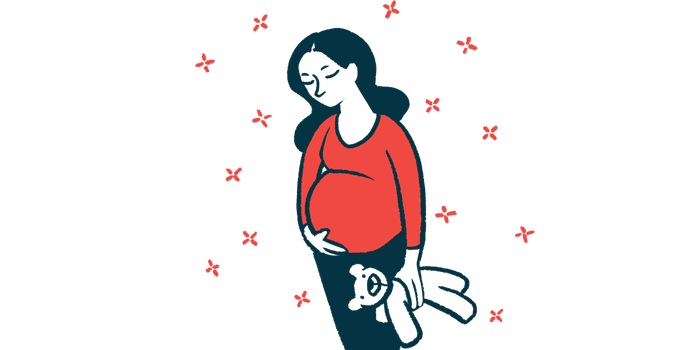Pulmonary embolism may be first symptom of Cushing’s: Report
Blockage in blood flow to lungs found in woman, 37, after childbirth
Written by |

A 37-year-old woman diagnosed with Cushing’s disease following childbirth experienced a pulmonary embolism — a blockage in blood flow to the lungs that’s generally caused by blood clots — as one of the first symptoms of the rare disorder.
According to clinicians, her case highlights that pulmonary embolism may be the first manifestation of Cushing’s leading up to its diagnosis.
“Since the risk of [blood clotting events] is increased by 10 times in postpartum period, while by 18 times in [Cushing’s syndrome], [preventive treatment with anticoagulants] is advised in pregnant women with [Cushing’s syndrome],” the team wrote.
“Difficulties are not only caused by physiological overactivity … during pregnancy, but also by the overlapping of clinical features of a healthy pregnancy and [Cushing’s syndrome],” the researchers added.
The case was described in the study, “Pulmonary embolism after delivery as the first manifestation of Cushing disease in pregnancy,” published in the journal Polish Archives of Internal Medicine.
Symptoms for woman with Cushing’s had started 4 years prior to pregnancy
Cushing’s syndrome comprises a group of disorders marked by the presence of excessive levels of cortisol, a steroid hormone normally produced by the adrenal glands sitting atop the kidneys.
The diagnosis and management of Cushing’s, always a challenge, is particularly difficult among pregnant women. This is due not only to the increase in cortisol levels that normally occurs during pregnancy, but also to the overlap of clinical features associated with pregnancy and those linked to Cushing’s.
Now, researchers in Poland described the case of a woman who was diagnosed with Cushing’s disease, a form of Cushing’s syndrome, after experiencing a pulmonary embolism following the birth of her child.
The woman was obese, had high blood pressure, and gestational diabetes. She had gained 40 kg (88 pounds) during her pregnancy.
Her baby was delivered prematurely, by cesarean section at 28 weeks of gestation, due to pre-eclampsia, a pregnancy complication characterized by high blood pressure and organ damage.
Two days after delivery, the woman started experiencing shortness of breath. A CT pulmonary angiogram, an exam that takes pictures of the blood vessels that connect the heart to the lungs, detected the presence of a blood clot that restricted blood flow to the lungs, a so-called pulmonary embolism.
She started treatment with anticoagulants — medicines that can break down blood clots — without any bleeding complications.
Clinicians thrombophilia, a condition that increases a person’s tendency to form blood clots, as a potential cause of her pulmonary embolism. She then was referred for evaluation by a specialist in endocrinology — essentially the study of hormones.
At her admission to the hospital, she had symptoms of obesity and high blood pressure that had persisted following her delivery. The team noted she was being treated with three medications for these complaints.
Her symptoms had started about four years earlier, with high blood pressure and a weight gain of 20 kg, or 44 pounds.
An MRI scan then revealed the presence of a small tumor in the brain’s pituitary gland — a microadenoma measuring 3×2 mm — confirming the diagnosis of Cushing’s disease.
Our case illustrates that a [pulmonary embolism] may be the first life-threatening presentation of [Cushing’s syndrome] that leads to diagnosis.
The patient successfully underwent surgery to remove the pituitary tumor. After the procedure, she was started on hydrocortisone replacement therapy to prevent her cortisol levels from dipping too low.
Her blood pressure gradually normalized, allowing her to come off blood pressure-lowering medicines within one year. Cortisol production also normalized 16 months after she underwent surgery. Anticoagulant treatment was stopped after nine years.
During the 10-year follow-up, the patient showed no symptoms of recurrence of Cushing’s. Her baby survived, though researchers noted the child had complications and “later was diagnosed with a mild mental retardation.”
“Our case illustrates that a [pulmonary embolism] may be the first life-threatening presentation of [Cushing’s syndrome] that leads to diagnosis,” the researchers wrote.
Moreover, they also noted that considering the risk of blood clots in pregnant women and those associated with Cushing’s, “further studies are needed to understand hypercoagulability in pregnant women with [Cushing’s syndrome] to set the standards of diagnosis and treatment.”






